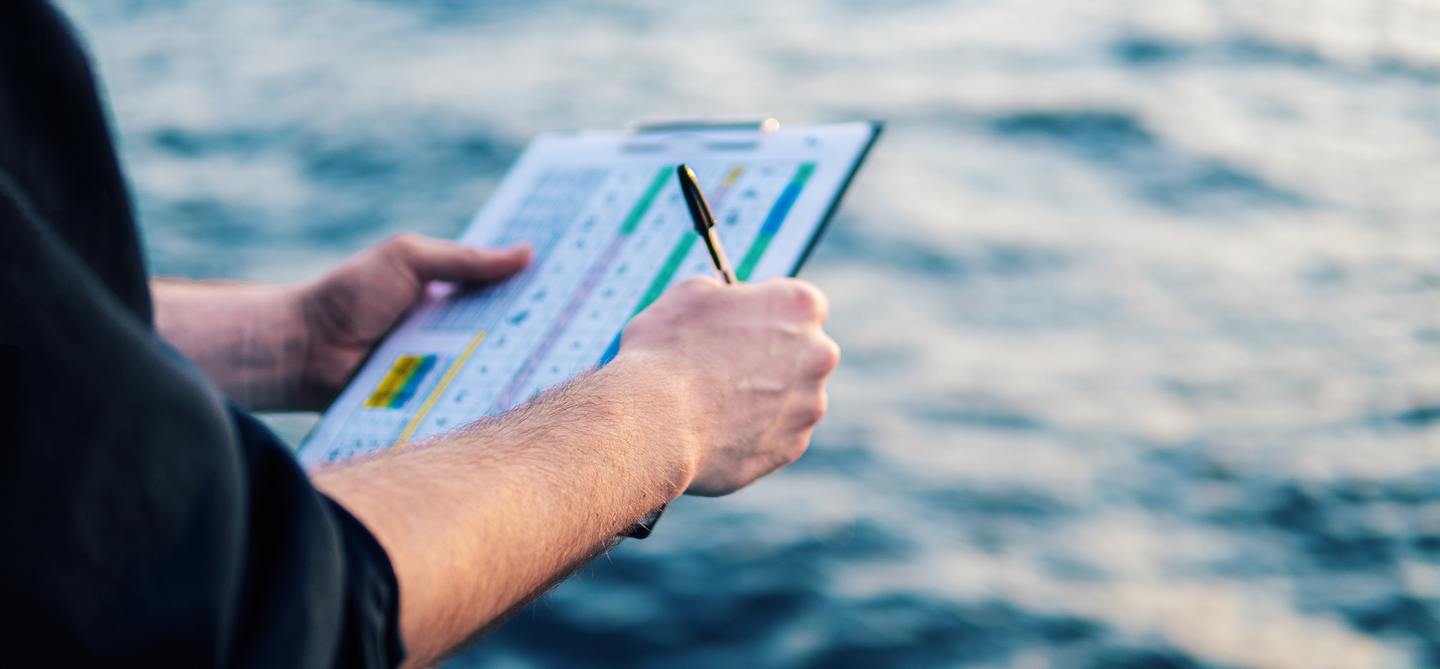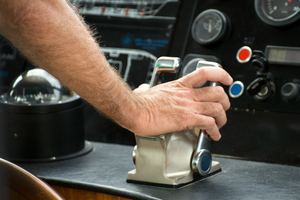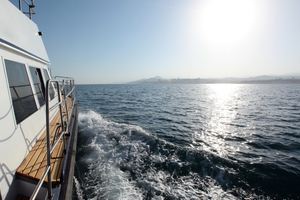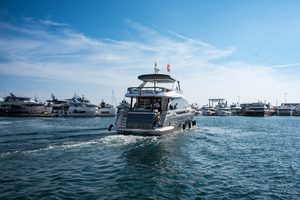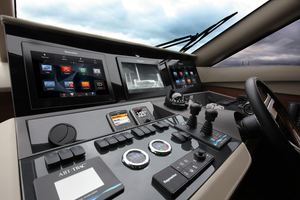Ensuring a safe and successful journey begins with thorough pre-departure checks. These checks include elements ranging from safety measures and essential supplies to the proper functioning of engines and equipment. By crafting a comprehensive checklist, you can be assured that every necessary step has been taken to secure a smooth and secure voyage.
With so much to remember it is well worth developing your own checklist to run through before every trip. Start with the initial advice provided below and expand it based on your own experiences along the way.
In this article:
Engines and Systems
Starting from the bottom of the boat and working upward, it's important to prioritize the engine inspection. Let's face it, if there's an engine problem, you're not going anywhere til it's fixed.
Perform a thorough pre-departure check on the engines. Any deviation from the norm, from your daily checks, could potentially signify a problem. If the engine room is clean and dry, it's easier to detect any leaks.
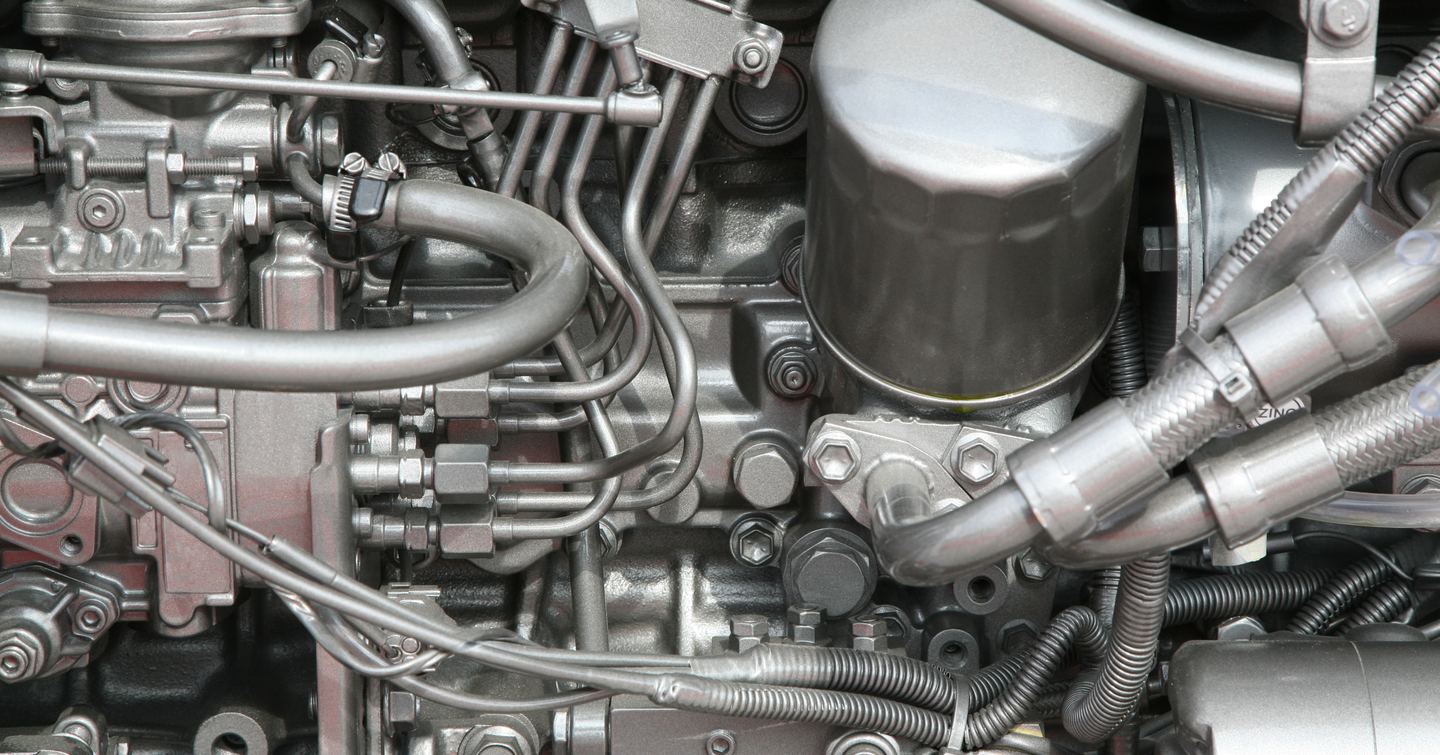
Check all levels, including water, oil, fuel, and cooling fluid. Ideally. you'll set off with a full fuel tank of fuel. If the tank isn't topped off, consider stopping at the nearest fuel berth before heading into open waters.
Additionally, inspect the belts for proper tension and carefully examine the electrical wires within the engine room. Should any wires display signs of weakness, seeking expert advice is highly recommended.
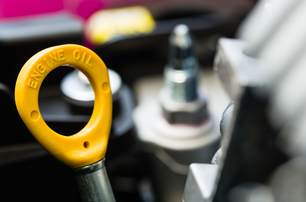

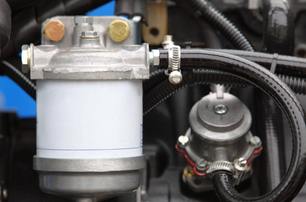
To facilitate easy recollection, just remember the acronym WOBBLES:
- W - Water
- O - Oil
- B - Belts
- B - Bilges
- L - Look
- E - Electrics
- S - Sea cocks
Check the water levels, inspect the oil, test the tension in the belts, examine the bilges for leaks or debris, take a general look around the engine to ensure proper hose clamping, and identify any exposed wires. A quick examination of the engine's electrical system can provide early alerts for potential issues. Check the seacocks (and make sure the appropriate-sized softwood bungs are close by).
Below Deck
Moving up from the engine bay, your next pre-departure check will focus on the below deck area. Proper stowage is actually part of the Safety of Life at Sea (SOLAS) safety brief. Even if the forecast suggests a smooth sea, it's important to ensure loose items are properly stowed to prevent movement and breakages on passage.
During this stage of your pre-departure checks, ensure every hatch, window, and porthole is securely closed. Leaving a hatch open while at sea can result in water ingress and potentially flood the boat.
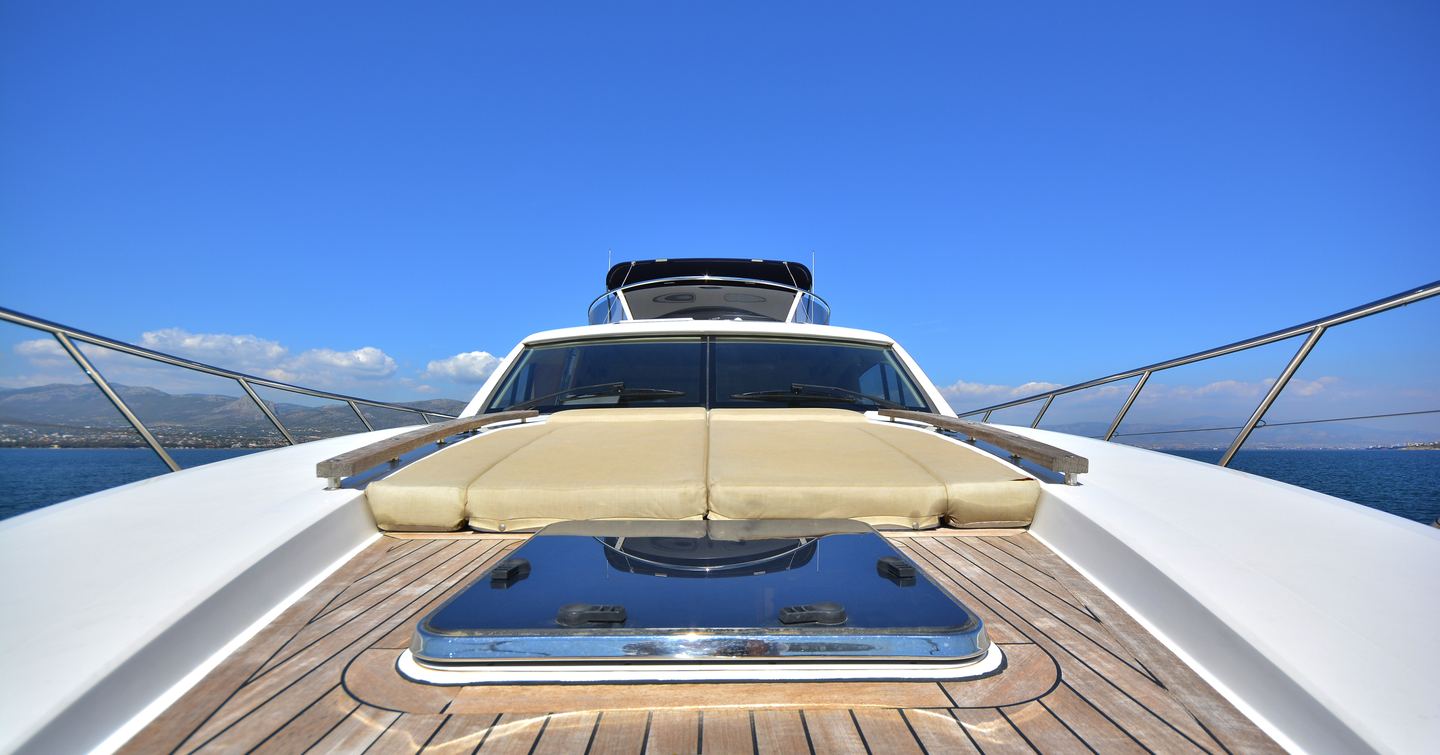
As part of your below deck pre-departure checks, be sure to lift a floorboard in all areas of the yacht to inspect for any water accumulation or indications of potential leaks.
Additionally, check the instruments that monitor water tanks, fuel tanks, and holding tank levels. It's advisable to set off with full water and fuel tanks, but avoid departing with a full holding tank. Arrange for a pump-out unless you're heading well offshore where the contents can be responsibly disposed of.
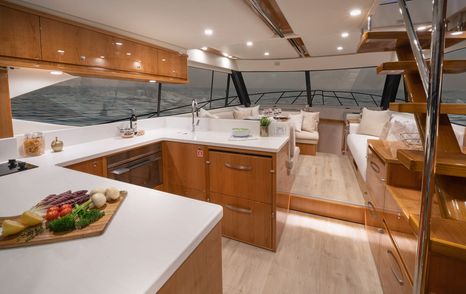

Regular testing of the yacht's carbon monoxide and cooking gas detection systems is highly advisable as these gases can accumulate within the hull, posing potentially lethal risks.
To ensure the automatic bilge pump is functioning correctly, simply lift the float switch to confirm that the pump activates.
Visual inspection of salon, galley, cabins:
- Safe stowage
- Hatches closed
- Floorboard check
- Alarm systems check
- Fresh water tank level
- Holding tank (black water tank) level
- Fuel tank level
- Bilge pumps check
On Deck
For your peace of mind, it's beneficial to conduct a full deck perimeter check. Ensure all loose gear, canvas covers, and cushions are stowed away or firmly secured. This walk-around is also an additional hatch closure check.
Be vigilant for slippery areas underfoot, potential trip hazards, and any ropes trailing overboard, which might entangle the propeller and incapacitate the yacht.
Remember to promptly coil and secure all dock lines soon after departing the dock, ideally before reaching open water.

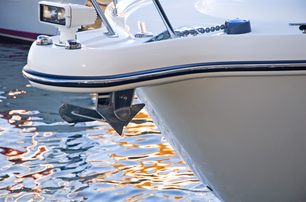
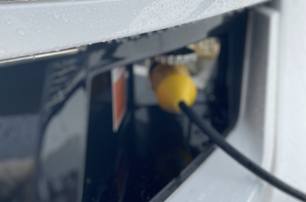
Be sure to disconnect the shore power cable before departing the dock to prevent potential damage to the marina's shore power socket or pedestal, which could lead to an avoidable repair bill.
Even if anchoring isn't on your itinerary, it's wise to check that the yacht's main anchor is prepared for deployment. In the event of an engine failure, particularly in close proximity to rocks, the coastline, or other vessels, swift deployment of the anchor may become necessary. Whilst you're in the anchor locker, double check the warp is attached to a strong point.
Before departure, it's important to thoroughly inspect the safety gear on the yacht to ensure readiness for any potential emergencies while at sea."
Overview
- All loose gear securely stowed or lashed down
- No trip hazards
- Covers and cushions stowed
- Deck hatches closed
- Shore power disconnected
- Ropes secure
- Anchor ready to deploy
- Safety gear checked and ready to deploy
- Ensign hoisted (and courtesy flag, if cruising abroad)
- Tender secured
Passage Plan
Before departure, conduct a final review of your passage plan and confirm that you've logged your trip either with a shore contact or a tracking app.
Should there be any alterations in the weather forecast, it's important to reassess the entire plan and determine the feasibility of the journey.
For more comprehensive information, refer to our detailed passage planning article.
Radio Check
Check comms with a radio check to the harbor master.
- Use the harbor channel, not Ch16.
- Check 'squelch' is just off the white noise.
- Adjust volume.
- Request a radio check.

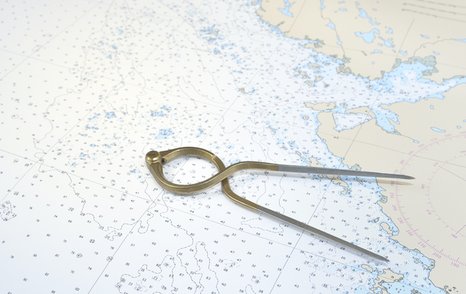
Overview
Check Instruments and comms
- Check all navigation instruments
- Radio check
- Mobile phone fully charged
- Passage plan checked
- Passage plan logged with tracking app or shore contact
- Weather forecast checked
Dockside
Before departure, step off the yacht to inspect the dockside.
- Prepare the lines to be easily slipped from the yacht, and disconnect the shore power.
- Ensure that all items belonging to the yacht are on board and not left behind.
- Responsibly dispose of any rubbish.
- Take note of any debris in the water that might potentially catch on the propellers.
Conducting these visual checks is crucial for ensuring a smooth getaway.
Switch On
You've made all your checks, below deck, engine room, and on deck. The yacht is prepared and your dockside inspection has assured you that all is well for departure.
It's time to switch on the engines.
Whilst you are still securely tied to the dock, turn on the engines and run the final checks.
Look and listen.
There are several key indicators including:
Engine warning lights:
Ensure that no warning lights remain illuminated, indicating any potential issues.
Engine gauges:
Monitor the engine gauges for proper readings such as oil pressure, temperature, and battery voltage, ensuring they are within the normal operating range.
Exhaust system:
Listen for any irregularities in the exhaust sound, which could indicate a problem with the engine or exhaust system. Is water pumping through the exhaust system?
Fluid leaks:
Look for any signs of fluid leaks, such as oil or coolant, that may suggest a potential issue with the engine or its components.
Propeller movement:
Verify that the propeller is functioning smoothly and properly engaging, ensuring the yacht's ability to maneuver effectively.
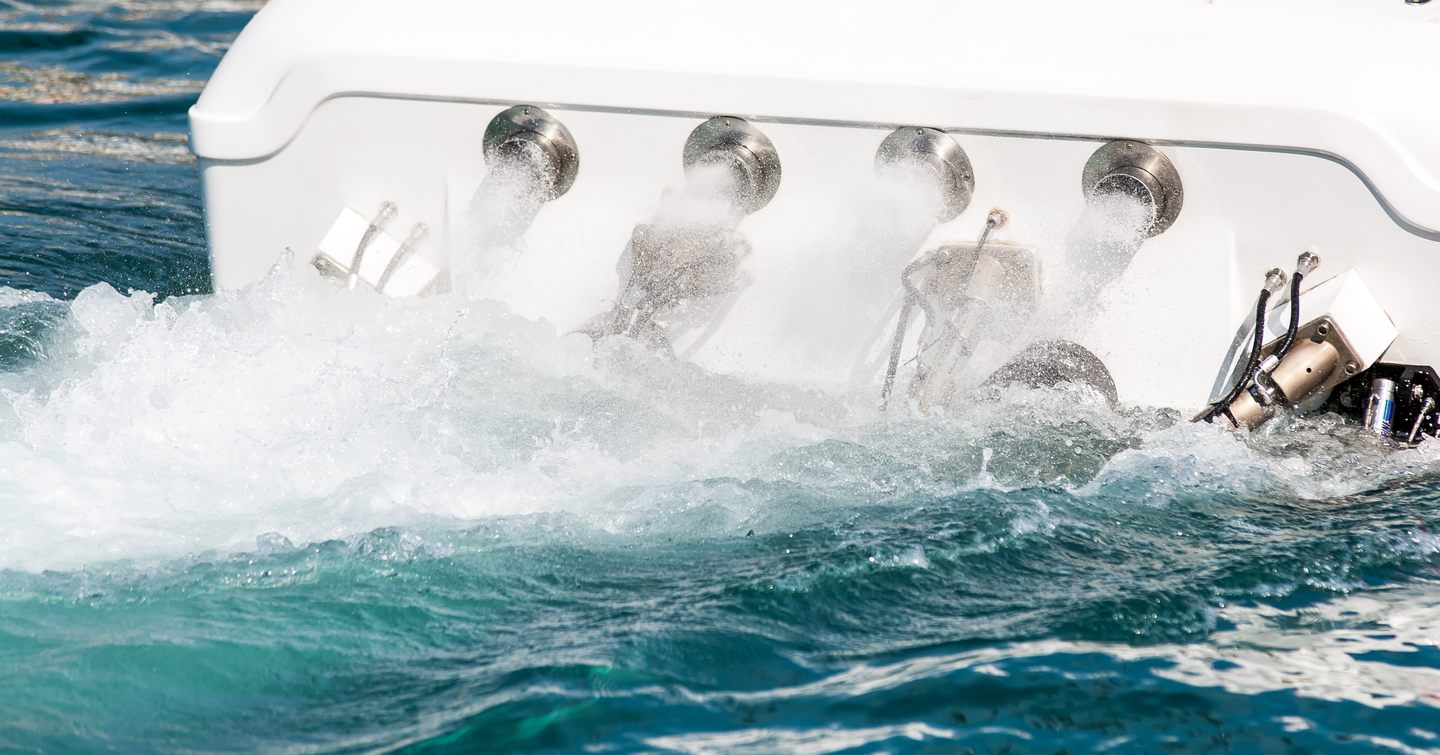
Overview
Check the engine, flow, props, gears and thrusters
- Battery charge status
- Test all switches at circuit breaker, turn breaker panel off
- Engine running smoothly
- Engine temperature and oil pressure gauges
- Cooling water circulating properly
- Bow (and stern) thrusters working
- Test trim tabs and outdrive trim (if appropriate)
- Test forward and reverse gear while still tied to the dock
- In neutral, test throttle response
Crew and Guests
Conducting a safety briefing is not only a legal requirement in many countries but also an essential practice. The briefing should aim to reassure the crew and guests, providing them with an understanding of potential hazards and the appropriate actions to take, in addition to welcoming them onboard and making them feel comfortable.
As a minimum, every person onboard should be fitted with a life jacket and advised for safe stowage of their personal life jacket and their personal belongings.
Every person onboard should have made the captain aware of any health issues.
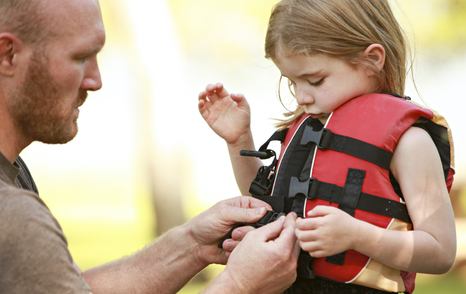

It’s up to each individual skipper to decide whether or when guests and crew should wear lifejackets on board. However, issuing and correctly fitting a life jacket for every person onboard is part of the SOLAS requirements and should not be missed.
Share the intended destination with crew and guests, whether it's an anchorage for a brief stop or a harbor a couple of days away. Share brief details about the destination and provide an estimated time of passage to keep everyone informed and prepared for the journey ahead.
Be very clear with the crew as to their role in the departure.
Overview
- Safety briefing
- Life jackets fitted
- Explain a brief passage plan
- Crew briefed on departure roles
